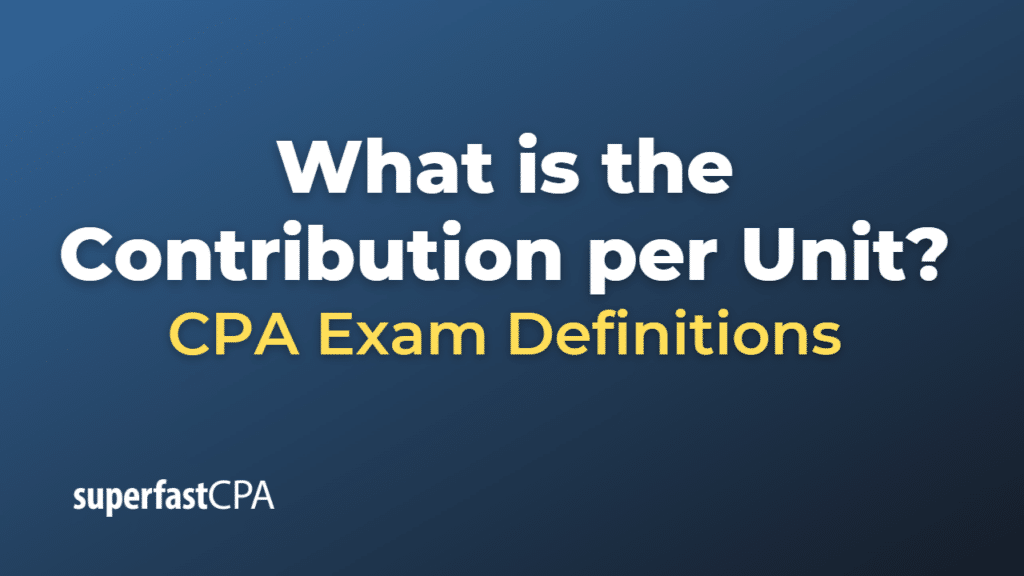Contribution per Unit
The contribution per unit, also known as the unit contribution margin, is a financial metric that represents the difference between the selling price per unit and the variable cost per unit of a product or service. It measures the amount of money generated by each unit sold that contributes to covering fixed costs and generating profit. In other words, it indicates how much each unit sold contributes to the company’s overall profitability.
To calculate the contribution per unit, use the following formula:
Contribution per Unit = Selling Price per Unit – Variable Cost per Unit
The contribution per unit provides valuable insights for businesses, helping them to:
- Assess product profitability: By comparing the contribution per unit of different products or services, a company can identify which items contribute the most to covering fixed costs and generating profit.
- Make informed pricing decisions: Understanding the impact of pricing changes on the contribution per unit enables businesses to make strategic pricing decisions.
- Evaluate cost efficiency: The contribution per unit highlights areas where variable costs can be reduced to improve the contribution margin and overall profitability.
- Guide resource allocation decisions: The contribution per unit can help businesses prioritize resources and focus on products or services with the highest contribution margin.
In summary, the contribution per unit is a financial metric that represents the difference between the selling price per unit and the variable cost per unit of a product or service. It measures the amount of money generated by each unit sold that contributes to covering fixed costs and generating profit, helping businesses assess product profitability, make pricing decisions, evaluate cost efficiency, and guide resource allocation decisions.
Example of Contribution per Unit
Let’s consider a hypothetical example of a company that sells two types of products: Gadget A and Gadget B.
Here is the cost and sales information for each product:
Gadget A:
- Selling price per unit: $120
- Variable cost per unit: $75
Gadget B:
- Selling price per unit: $200
- Variable cost per unit: $150
First, let’s calculate the contribution per unit for each product:
- Gadget A: $120 (price) – $75 (variable cost) = $45
- Gadget B: $200 (price) – $150 (variable cost) = $50
From this calculation, we can see that the contribution per unit for Gadget A is $45, while for Gadget B, it is $50. This means that for every Gadget A sold, the company generates $45 to cover fixed costs and generate profit. For every Gadget B sold, the company generates $50 to cover fixed costs and generate profit.
Now let’s assume the company has $12,000 in monthly fixed costs, sells 150 units of Gadget A, and 100 units of Gadget B. We can calculate the total contribution margin to determine if the sales revenue is sufficient to cover fixed costs:
- Gadget A: $45 (contribution per unit) × 150 (units sold) = $6,750
- Gadget B: $50 (contribution per unit) × 100 (units sold) = $5,000
- Total Contribution Margin: $6,750 (Gadget A) + $5,000 (Gadget B) = $11,750
In this case, the total contribution margin ($11,750) is not enough to cover the fixed costs ($12,000), resulting in a loss of $250. The company may need to consider adjusting its pricing, reducing variable costs, or increasing sales volume to improve profitability.
In this example, the contribution per unit helps the company assess the profitability of each product, informing decisions related to pricing, cost efficiency, and resource allocation.













